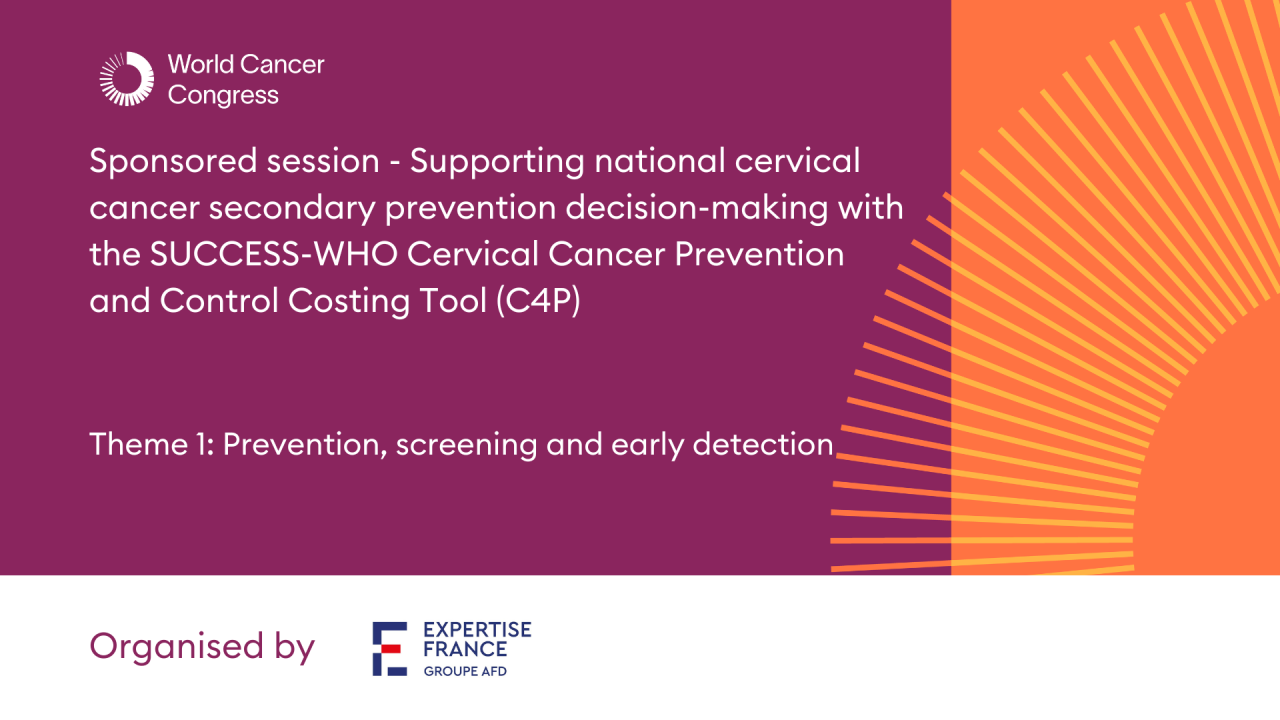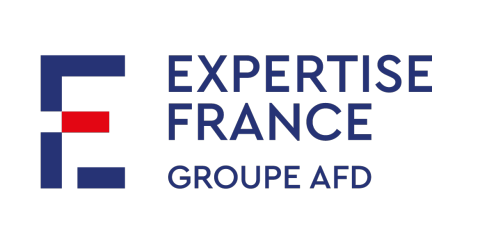

Sponsored session - Supporting national cervical cancer secondary prevention decision-making with the SUCCESS-WHO Cervical Cancer Prevention and Control Costing Tool (C4P) - ENGLISH
Plenary E (level +3)
Sponsored session
Information
Session organised by Expertise France
Chaired by Smiljka de Lussigny, Unitaid (Switzerland)
Presentations:
1. Pannel discussion - Smiljka de Lussigny, Unitaid (Switzerland)
2. Pannel discussion - Cindy Gauvreau, The Hospital for Sick Children, Research Institute (Canada)
3. Pannel discussion - Innocent Adoubi, National Cervical Program, Ministry of Health (Côte d’Ivoire)
4. Pannel discussion - Jan Aura Laurelle Llevado, Department of Health (Philippines)
5. Pannel discussion - Lisa Huang, Expertise France (France)
Theme
1. Prevention, screening and early detection
Objectives
In the SUCCESS (Scale Up Cervical Cancer Elimination with Secondary prevention Strategy) project the existing C4P tool was upgraded and re-aligned with the 2019 WHO guidelines for cervical cancer screening and precancer treatment. The SUCCESS-WHO C4P is as much a process as a technical tool, engaging clinical and technical experts in thinking through and specifying the components of service provision (e.g., facilities capacity, supplies and equipment, personnel) and supportive activities (e.g., training, communication, planning). Planners may iteratively test out programming assumptions and view the impacts on budgetary and health system resources. In this session the SUCCESS-WHO C4P tool and its application in the four SUCCESS project countries (Côte d’Ivoire, Burkina Faso, Guatemala, and the Philippines) is described. Members of the Côte d’Ivoire and the Philippines National Cancer Programs will respectively present the highlights of recent costing workshops with national stakeholders, where decision-makers cooperatively validated C4P cost and quantity outputs to inform policy- and decision-making. Relevance for development of a national cervical cancer control strategy will be discussed. Speakers will also present alternative scale-up scenarios developed for their countries and share the implications for attaining and sustaining medium-term screening coverage levels that may lead to long-term national cervical cancer elimination.
Speakers

Cindy Gauvreau
Senior Research AssociateThe Hospital for Sick Children, Research Institute
Innocent Adoubi
DirectorNational Cervical Program, Ministry of Health
Jan Aura Laurelle Llevado
Division ChiefDepartment of Health
Lisa Peiching Huang
Director, SUCCESS projectExpertise FranceSdL
Smiljka de Lussigny
Manager, Cervical cancer investmentsUnitaid